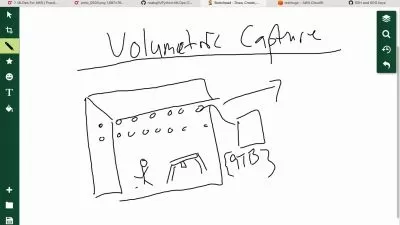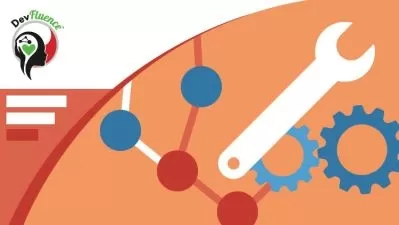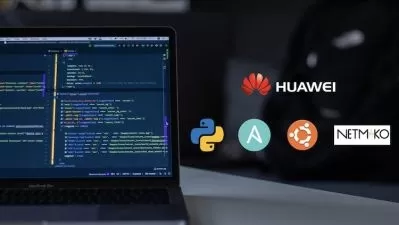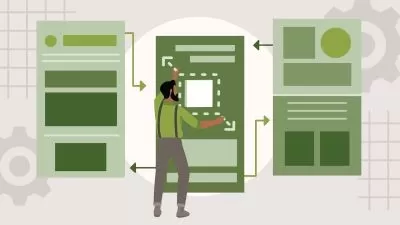Firmware Engineering
ShreyaKrishnan sarthak
1:46:22
Description
"An Introduction to the Fundamentals of Firmware Engineering for Embedded Systems"
What You'll Learn?
- Students will learn about the fundamental concepts and principles of firmware development, including memory management, communication protocols, and system arch
- Students will be able to design, implement, and test firmware solutions for embedded systems using various programming languages and tools.
- Students will be able to troubleshoot and debug firmware code using various debugging tools and techniques.
- Students will be able to perform system performance analysis and optimization to ensure that their firmware solutions are efficient and reliable.
Who is this for?
More details
DescriptionFirmware engineering is a crucial field in the world of computer science and engineering, as it involves the design, development, and maintenance of firmware for various electronic devices and systems. In this course, you will learn the fundamental concepts, tools, and techniques that are essential for building reliable and efficient firmware solutions.
You will start by learning about the different types of firmware, including boot firmware, application firmware, and device firmware. You will also learn about the key challenges and considerations that are involved in firmware development, such as memory management, resource allocation, and security.
In addition, you will learn about the different communication protocols and interfaces that are commonly used in firmware engineering, including UART, I2C, SPI, USB, and Ethernet. You will also learn about the role of operating systems and networking in firmware development, and how to develop device drivers and system-level software.
Another key focus of this course is on debugging and troubleshooting techniques. You will learn how to use various debugging tools and techniques, such as debuggers, analyzers, and simulators, to identify and fix issues in your firmware. You will also learn about code review and peer review, which are essential for ensuring the quality and reliability of your firmware.
Finally, you will learn about the importance of requirements gathering and specification in firmware development, as well as how to optimize system performance and use collaboration tools and techniques to work effectively with others. You will also learn about security best practices and protocols, and how to integrate hardware and firmware in a co-development process.
Throughout this course, you will have the opportunity to apply your knowledge through hands-on exercises and projects, giving you the skills and experience you need to succeed in the world of firmware engineering.
Who this course is for:
- This course is intended for software developers who are interested in learning about firmware development for embedded systems. It is ideal for individuals who are looking to gain expertise in programming low-level hardware and microcontrollers, as well as those who want to learn about networking protocols, operating system internals, and system-level software development. This course is suitable for learners who have some programming experience and are comfortable with concepts such as data structures and algorithms, as well as those who are new to firmware development and want to learn the fundamentals. It is also suitable for professionals who are looking to expand their skill set and stay up to date with the latest techniques and technologies in firmware development.
Firmware engineering is a crucial field in the world of computer science and engineering, as it involves the design, development, and maintenance of firmware for various electronic devices and systems. In this course, you will learn the fundamental concepts, tools, and techniques that are essential for building reliable and efficient firmware solutions.
You will start by learning about the different types of firmware, including boot firmware, application firmware, and device firmware. You will also learn about the key challenges and considerations that are involved in firmware development, such as memory management, resource allocation, and security.
In addition, you will learn about the different communication protocols and interfaces that are commonly used in firmware engineering, including UART, I2C, SPI, USB, and Ethernet. You will also learn about the role of operating systems and networking in firmware development, and how to develop device drivers and system-level software.
Another key focus of this course is on debugging and troubleshooting techniques. You will learn how to use various debugging tools and techniques, such as debuggers, analyzers, and simulators, to identify and fix issues in your firmware. You will also learn about code review and peer review, which are essential for ensuring the quality and reliability of your firmware.
Finally, you will learn about the importance of requirements gathering and specification in firmware development, as well as how to optimize system performance and use collaboration tools and techniques to work effectively with others. You will also learn about security best practices and protocols, and how to integrate hardware and firmware in a co-development process.
Throughout this course, you will have the opportunity to apply your knowledge through hands-on exercises and projects, giving you the skills and experience you need to succeed in the world of firmware engineering.
Who this course is for:
- This course is intended for software developers who are interested in learning about firmware development for embedded systems. It is ideal for individuals who are looking to gain expertise in programming low-level hardware and microcontrollers, as well as those who want to learn about networking protocols, operating system internals, and system-level software development. This course is suitable for learners who have some programming experience and are comfortable with concepts such as data structures and algorithms, as well as those who are new to firmware development and want to learn the fundamentals. It is also suitable for professionals who are looking to expand their skill set and stay up to date with the latest techniques and technologies in firmware development.
User Reviews
Rating
ShreyaKrishnan sarthak
Instructor's Courses
Udemy
View courses Udemy- language english
- Training sessions 53
- duration 1:46:22
- Release Date 2023/02/28




















